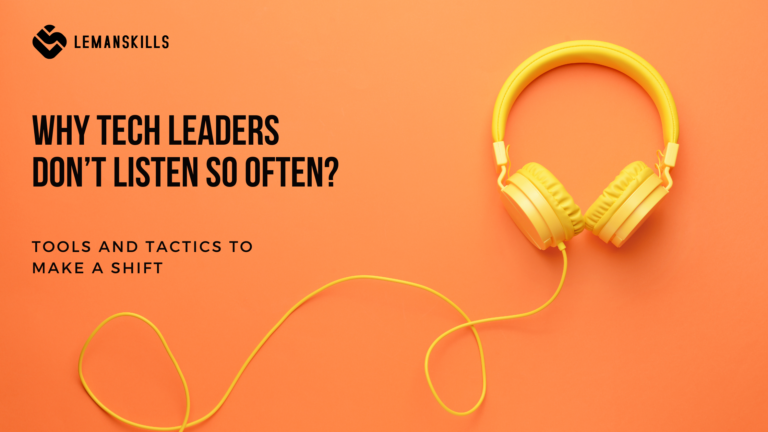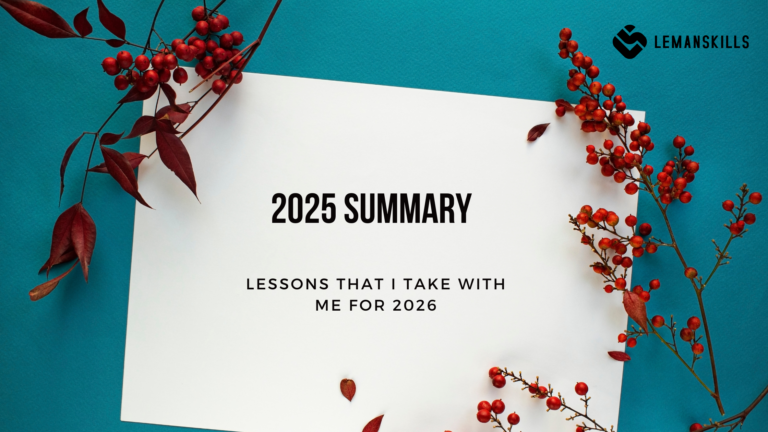We all have idols. People who we admire, out loud and/or in hiding. They can be our role models in different areas of life – perfect businessperson, entrepreneur, manager, expert, parent, partner, singer, actor, photographer, you name it. A lot of us want to be perfect in every role we have in our lives, even when we know that it is not possible. The best possible version.
What if I told you that it is possible? But in a different way. We all can be the best version of ourselves in all the roles that we have at the moment. What does it mean? And how to achieve it?
Let’s dig deeper and find out together.
What is this best version actually?
The best version of yourself is the person that you want, and you can be.
The beauty of it is that YOU define who is this person by yourself. Not the society, culture, country, your parents, other people WHO KNOW BETTER. You. Because you live this life, not anybody else. And you should know what is the best for you and how you want to live this life.
There are two types of mindsets that influence this subject. And there are not strictly connected to religion, sometimes they are, sometimes they aren’t.
The first one is conservative mindset. This one is all about keeping the status quo. Taking for granted everything that we have been taught: our role in society as men and women, our role in society as children (boys and girls separately), adolescents, adults and elderly people. The cycle of life (school, work, marriage, kids, sickness, death) or the beliefs we have about the position certain elements in life (how we should treat certain things, with what kind of priority they should have): family, work, country, church, house etc. It means that we live certain values, priorities that were given to us, until the end. It’s easier for most people, we don’t need to think about it, because it’s there. We don’t need to create anything new, since it’s all already there. It is what it is, no need to discuss it.
The second one is post conservative mindset. This is the place for people who have been in conservative space, took what they needed or wanted to take from it, and move further. They challenge the status quo, don’t agree to what is given, but looking for the best shape of reality that fits them, individually or as a group of people. They want something more from life, don’t want to spend their lives because somebody told them to do it in a certain way. It is harder, since we need to go way beyond our comfort zone to reach out for what’s over there, and we don’t actually know what we’re going to discover. But it’s worth the risk, sometimes a person discovers something, sometimes not – and that’s perfectly fine. It is all about living lifelong learning value: try, fail, make conclusions from it and move forward.
To be the best possible version of yourself you can be in both stages. It all depends on what “best version” means to you, individually. Though, I am a huge avocat of the post conservative mindset, since I can see how much more we can do when we challenge ourselves, ask hard questions, reach for more. Again, depends on what “more” means to every single one of us.
What to focus on to become this best version?
We can really use the structure of process thinking to become the best version of ourselves. These are the steps that can help you in making a plan to achieve what you want.
- Define what this best version means TO YOU. Personally. In which areas of your life you would like to become that? In all of them? In one of them? It is your choice and your definition, no one else’s. Write it down. There is a beautiful book written by Ben Hardy “Be Your Future Self Now” that can help you with this exercise. Use it, define it, make it yours.
- Choose your priority. You can’t be everything at once. You can’t do everything at the same time, there is no such thing as multitasking. Choose one role that you have right now to work on. Sometimes the roles are connected – in that case you can pick more than one, but be careful and mindful about what you do. Choose baby steps over a huge change – the more radical your moves will be, the higher risk of resistance and natural aversion to change of your body and mind. And quitting as a result of that.
- Make a plan. Use OKRs technique (I’m going to write another article about it, but until then you can use THIS SOURCE to get to know more about the framework). Make 3-5 objectives with 3-5 key results that will give you an answer to a question “am I achieving the goal?” to each role you chose in the previous step. Make it simple, memorable, measurable. Perfect OKRs are designed to be “stretched” by nature – it means that you need to go outside of your comfort zone and do better to achieve it. Try to do a little bit more than yesterday. Little steps will make you better, stronger, more resilient.
- Do it mindfully, cut what is not bringing you closer to your goals. One step at the time, every day. Be consistent with your decisions, don’t waste time on things that are not bringing you closer to this person you would like to become. Ben writes about it in his book that I mentioned above – cut the bs that is poisoning your life. How to do it?
What to avoid to not waste time?
We all need time to rest. To reset our brains, to watch a less ambitious movie or make fun of cute cats on Instagram. But there is a line between a need to have a little break and wasting time.
When I know that I’m wasting time?
When I do something repetitively, every day and it’s not giving me any value (i.e. scrolling social media).
When I get distracted all the time, since people ask me to do several things at the same time, and I can’t focus on one thing.
When I spend time with people who are energy vampires, and not creating any value to my life, often only whining about the world and other people.
So what can we do to avoid it and not wasting time? Cut it. Set healthy boundaries, protect ourselves and our time. If you do it right, it’s not rude or selfish (it can be seen that way at first though since people around you are not familiar with that kind of reaction; but no worries, they’ll get used to it). That’s the way of taking care of yourself, to be better in what you do, more efficient, more satisfied, healthier.
Spend time on things that really matter, that get you closer to achieving your goals. Cut everything else, especially if it’s not helpful at all. You will see the difference really quickly.
The bottom line
To become the best version of yourself you need to make a choice. Now. Who I want to be? What is the best version of myself? What do I need to achieve that? What I need to sacrifice to achieve that? Yes, sacrifice is necessary if we really want to change something. We should replace bad habits with good ones, bad people with good one.
Only then our life will be full, happy, healthy and meaningful. Isn’t it a thing that we all want at the end?




